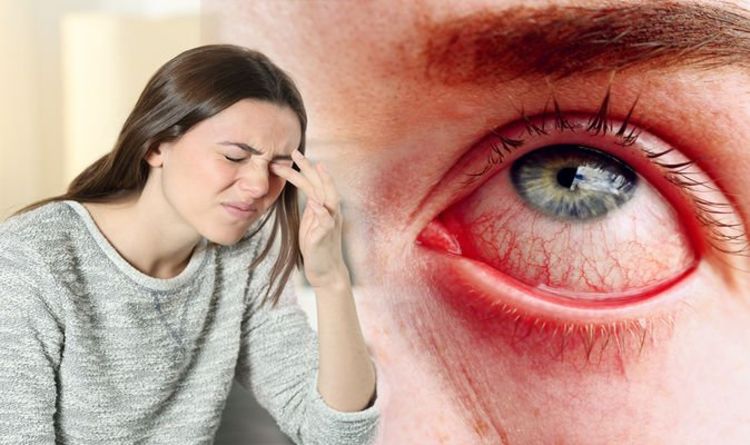
Eye health: Nutritionist reveals foods that protect your eyes
We use your sign-up to provide content in ways you’ve consented to and to improve our understanding of you. This may include adverts from us and 3rd parties based on our understanding. You can unsubscribe at any time. More info
Pink eye is caused by a variety of factors including viruses, bacteria, irritants such as shampoos, dirt, smoke, and pool chlorine or a reaction to eye drops. Though pink eye can be irritating, it rarely affects your vision. What are three sensations indicating early signs of pink eye?
Pink eye is an inflammation or infection of the transparent membrane which lines the eyelid and covers the white part of your eyeball.
When small blood vessels in the conjunctiva become inflamed, they’re more visible.
This is what causes the whites of your eyes to appear reddish or pink.

Common signs warning of pink eye include:
- Redness in one or both eyes
- A gritty feeling in one or both eyes
- A discharge in one or both eyes that forms a crust during the night that may prevent your eye or eyes from opening in the morning
- Tearing.
Itching, irritation, and/or burning are sensations felts in the eyes which could indicate pink eye.
An allergic type of pink eye produces tearing, itching, and redness in both eyes.
You might also have an itchy, runny nose.

Its important to speak to your GP if the following occur:
- There’s a lot of yellow or green discharge from your eye, or if your eyelids are stuck together in the morning
- You have severe pain in your eye when you look into a bright light
- Your vision is obviously affected by pinkeye
- You have a high fever, shaking chills, face pain, or vision loss.
Your ophthalmologist will examine the eyes to determine if it is in fact pink eye.
An acuity test may be done to see if vision has been affected.
Diagnosis of pink eye can usually be made based on symptoms and health history. Rarely are other tests ordered.
However, if bacteria are thought to be the cause or if the infection is severe, your healthcare provider may send a sample (cotton swab) of the secretions around your eye to a lab to identify the specific organism.
Source: Read Full Article